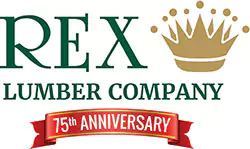Welcome to our interactive wholesale lumber catalog. We stock both hardwoods and softwoods, imported and domestic. You can search our wholesale lumber products using the filters on the left or by typing the name into the search box. Click on any item to view product details, including description, properties, and applications, as well as our Quick Quote form. You can also compare products by selecting the green “Compare” tab on up to four items and then clicking the “Compare” button.
If you cannot find the lumber product you are looking for, please contact us and we will source the material you need for you.
Domestic Hardwood Chestnut, Wormy
Latin Name: Castaneda dentate
Family: Fagaceae - the Beech family
Other Common Name(s): American Chestnut, Chestnut, Chinquapin, English Chestnut, European Chestnut, Spanish Chestnut, Sweet Chestnut, Wormy Chestnut
Domestic Hardwood
Suitable for Exterior/Interior Use
Interior Use Only
Uses
Cabinets, Millwork, Mouldings, Picture Frames
Distribution
The Chestnut tree originally grew in much of the eastern United States, and up into southern Ontario. In the 1930's the chestnut blight spread through region which killed virtually all of the trees. While off shoots of the original trees still grow the blight kills them before they have a chance to mature. Scientists think they may have discovered naturally existing blight resistant trees, but only time will tell, The prime source of Chestnut today is reclaimed wood from old barns, and factory buildings.
General Description: The heartwood is a reddish-brown to grayish-brown in color, sapwood is lighter in color. The wood has a straight grain, that sometimes spirals. Due to large open pores the texture is considered course.
Price Range ($ least expensive, $$$$$ most expensive):
$$$$$
Working Properties
Machining: Good
Nailing: Fair
Glueing: Good
Screwing: Fair
Finishing: Good
Physical Properties
Weight (lbs/BF): 2.65
Specific Gravity: 0.40-0.45
Modulus of Rupture (psi): 6,400-9,900
Modulus of Elasticity (1,000 psi): 1,025-1,320
Side Hardness (lbs): 540
Additional Information
Pre-boring holes for nailing and screwing is required. Due to the fact that the wood is all reclaimed it may contain worm holes, iron stain, fastener holes, and other such defects from its primary use.
Item Availability
4/4 Wormy / Rustic
5/4 Wormy / Rustic
8/4 Wormy / Rustic

